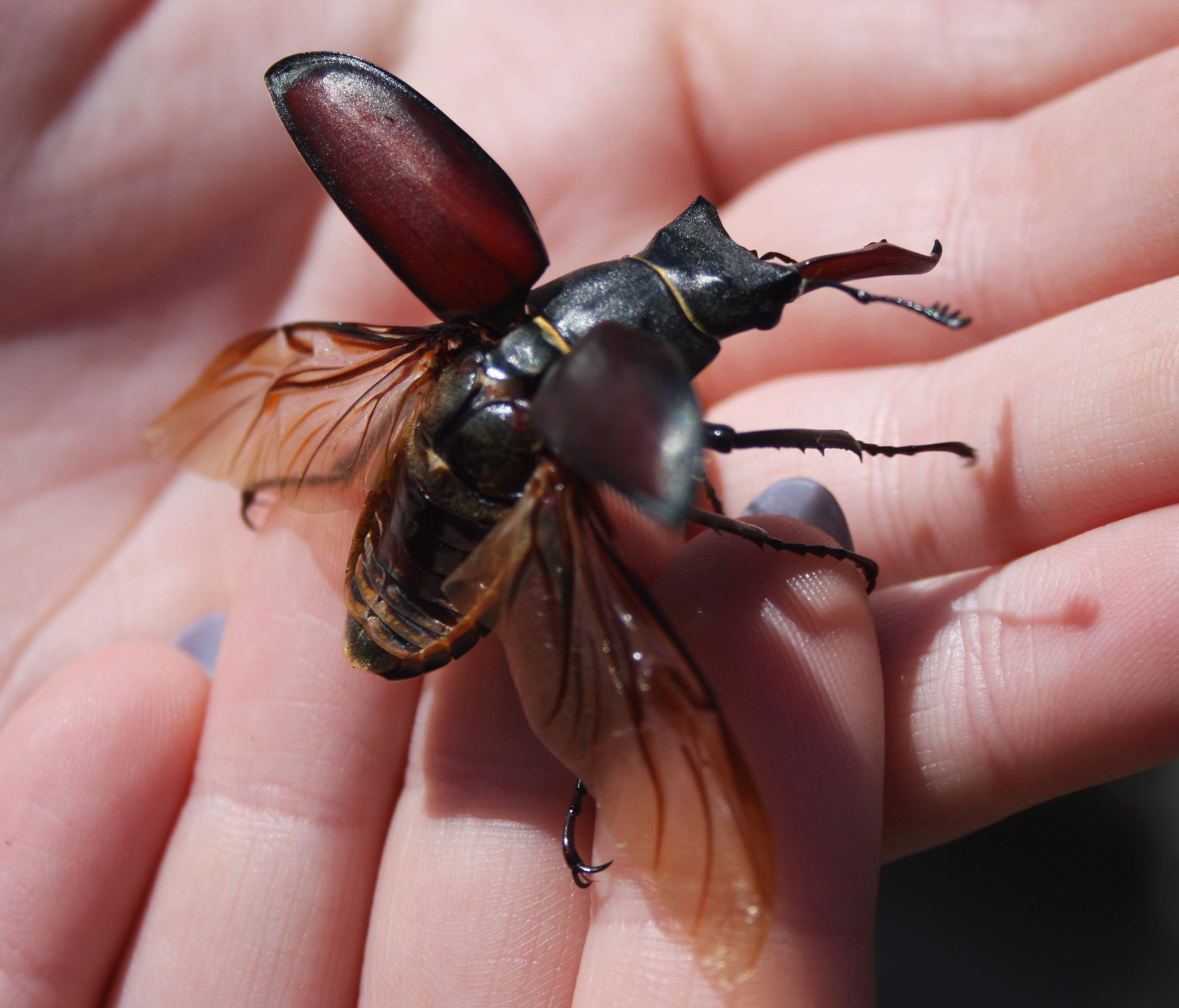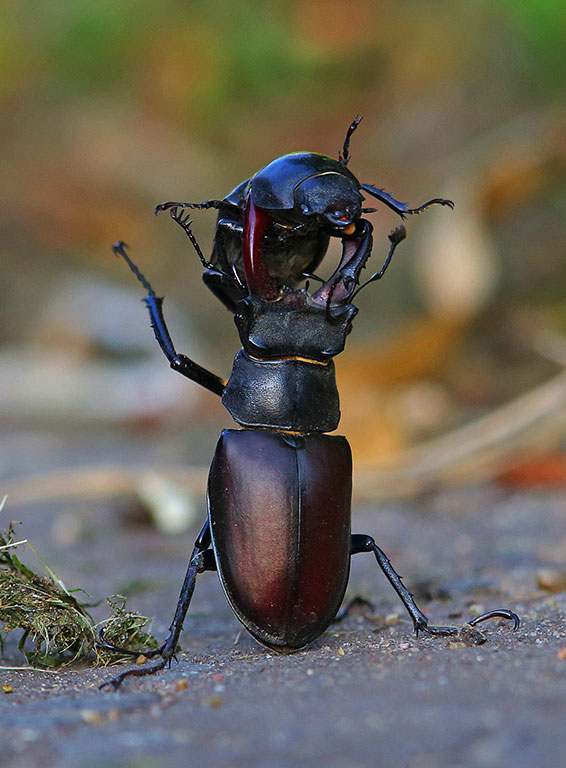Stag beetles in Europe

Status
Declining across Europe and red listed in many European countries. Extinct in Denmark and Latvia.
Population
Unknown
Scientific name
Lucanus cervus
Assessing the conservation status and population trends of stag beetles, Lucanus cervus, using a citizen science approach.
Funding for this project has now finished
The problem
The European stag beetle (Lucanus cervus) is one of the biggest terrestrial beetles in Europe. This iconic beetle is dependent on the availability of dead wood, which the larvae feed on for three to five years below ground. Due to habitat fragmentation, increasing canopy cover and the lack of dead wood, this saproxylic beetle is threatened and is listed on Annex II of the habitat directive. Part of the requirements for any species listed on the directive is that they are monitored annually to determine how the species is faring. So recently a group of European scientists and conservationists collaborated to create a European standardized monitoring protocol.
The solution
In order to assess the population trend of stag beetles in Europe, this project aims to create an international network of transects that monitors the stag beetle across its entire range.
Sanne Govaert, who is carrying out her internship in collaboration with Arno Thomaes from the Research Institute for Nature and Forest, is building a public website. This website will contain information about the network, the monitoring transects, the different Lucanus species in Europe and access to the monitoring protocol and newsletters. This website is an essential tool to reach out to volunteers and provides a portal for data collected from the monitoring transects. And in turn help the future of stag beetles across Europe.
Meet the team
Sanne Govaert: “My two big passions are ecology and sustainability. In my free time I love to photograph nature, especially arthropods with my macro lens. I am often running around with a butterfly net, and during vacations I like to hike in the mountains, hoping to see some wildlife.
Last year, I dug my own amphibian pond in my dad’s garden, and when I am home it is one of my favourite activities to sit next to the pond and enjoy all the wildlife it attracts. I am most interested in insects, such as butterflies, dragonflies and beetles. I just graduated as a Master in biology and hope to find an exciting job in conservation biology.
I am currently involved in an NGO about sustainable education in new biology, called Ekoli. We provide applied workshops about new biological techniques, such as workshops about bioluminescence or growing biodegradable building materials. Ekoli pays special attention to vulnerable and underprivileged groups in society, because every child deserves the same opportunities. With Ekoli, we enthuse the next generation of bioscientists.”
Find out more about our work for European stag beetles:

